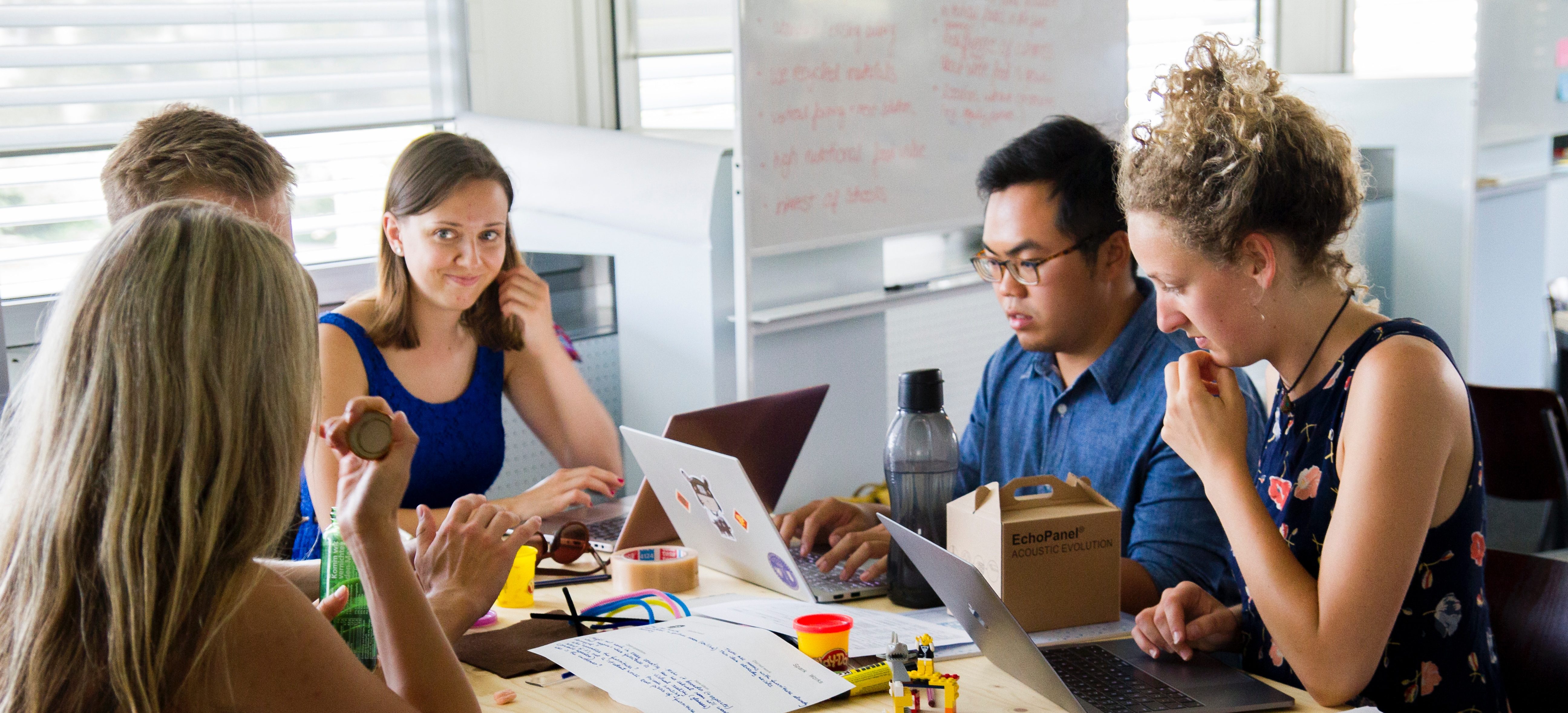Last week, we discussed how poorly planned brainstorming sessions can be a waste of everyone’s time in government as well as what to do before those meetings to improve the process.
This week, we wanted to wrap up with what to do during and after the meeting to make the most use of a government brainstorming session.
During the meeting…
Break the Ice
Don’t just go around the room with names and titles. In the spirit of getting people into a creative mindset, ask them to complete a simple creative task to kick off the session. One of our favorite ice-breakers, which we often use with city governments, is to ask participants to write down a headline they’d like to see in their local newspaper in 2025. Here’s some other ice-breakers to consider (and some games to avoid):
- What was the first concert you attended and the most recent concert?
- If you could go on a vacation anywhere in the world right now, where would it be?
- In kindergarten, what did you want to be when you grew up?
Anchor
Quickly (meaning in 1 minute) remind all the participants why they’re there and what success looks like for your brainstorming session. This should be a verbal reminder of the objectives you included in your invitation. This anchors the session by reminding everyone why they’re participating.
Define the Problem
Defining the problem gets everyone speaking the same language. Good problem statements are key to good brainstorming sessions.
The best problem statements are both specific and aspirational. They set boundaries and scope for the brainstorming that will ensue. Useful boundaries include timeframe, geography, population, funding amount, etc.
For example, “Year after year, there is a $250K gap to fully fund the city’s after-school programs. The most affected are children of single mothers living in the City’s northeast neighborhood. Eighty-nine percent of the families affected are Hispanic. Not having the after-school programs puts a tremendous strain on these families to secure childcare while the mother works.”
“How Might We…?”
Once you’ve gotten to this point in the brainstorming session, the creativity of your participants should be flowing – you’ve broken the ice, anchored the conversation to your objectives and defined the problem. Now is the time to ask participants, “How Might We…?” As in, “How might we fill the yearly $250K gap to fully fund the city’s after-school program?”
These three words – how might we – are used by brainstorming pros like Ideo and Google. We’ll let Harvard Business Review tell you why these three words are so effective, but the takeaway is that “how might we…” sets people up in the right mindset to contribute ideas. It emphasizes process (“how”) and teamwork (“we”), but most importantly, the word “might” signals to participants that the ideas they contribute are not full-fledged suggestions or recommendations, they’re just ideas. This makes people feel comfortable and safe to contribute. Think of how the phrase “How should we…” signals an entirely different message.
*Warning: Don’t offer your own ideas, especially not early in the session. Lead instead by asking thought-provoking questions. If you’re organizing a meeting to solve a problem, you probably have ideas of your own about solutions. But even if people are slow to contribute ideas, try not to offer your own ideas until you’re well into the meeting. Instead, ask questions. Even if they are leading questions, these will make people feel comfortable sharing their own great ideas.
Write it Down
It’s easy to get caught up in the moment when exciting ideas are getting tossed around. But if you leave without shared notes, people won’t feel heard or empowered to act. So, always have someone writing things down, ideally on a surface that’s visible to everyone (e.g. whiteboard). Great note taking helps with assigning homework and following up. Ideas that aren’t relevant can always move into your parking lot for later discussion.
Assign Homework
In a good meeting, all participants leave with the same message. They have an understanding of what’s going to happen next, who’s responsible for making it happen and by when.
After the meeting…
Reflect
Take a picture of the whiteboard and share it with the group. Then find a quiet spot for an hour that day or early in the next to reflect. What are your biggest takeaways from the session? Did any common themes or ideas emerge? Write your notes down and share them with participants, if appropriate.
Follow Up
Follow-up gets you to 100 percent success. A great leader of government brainstorming sessions follows up on the homework that was assigned, and makes it as easy as possible to act.
People these days, especially government employees, are busy. So, be the colleague who hosts the best meetings…the meetings that are fun, engaging and well-managed. Remember, the more value you provide, the more value you’ll get.
Managing brainstorming meetings is more art than science – for additional tips, we recommend:
- How to avoid anchoring.
- How to inspire creative thinking.
- How to run a brainstorm with introverts (and extroverts).
- Why meetings suck and what to do about it.
Thanks to my colleague and #1 brainstorming partner, Ellory Monks, for all your excellent contributions to this piece!
Elle Hempen is part of the GovLoop Featured Blogger program, where we feature blog posts by government voices from all across the country (and world!). To see more Featured Blogger posts, click here.




Please fix the links in follow up section. they are not finding the reference article
Hello! I think we have fixed the links, please refresh. Apologies.
Some of the links do not work – this is very disappointing as this article has a lot of great points, and I would like to know more.
Hello! I think we have fixed the links, please refresh. Apologies.